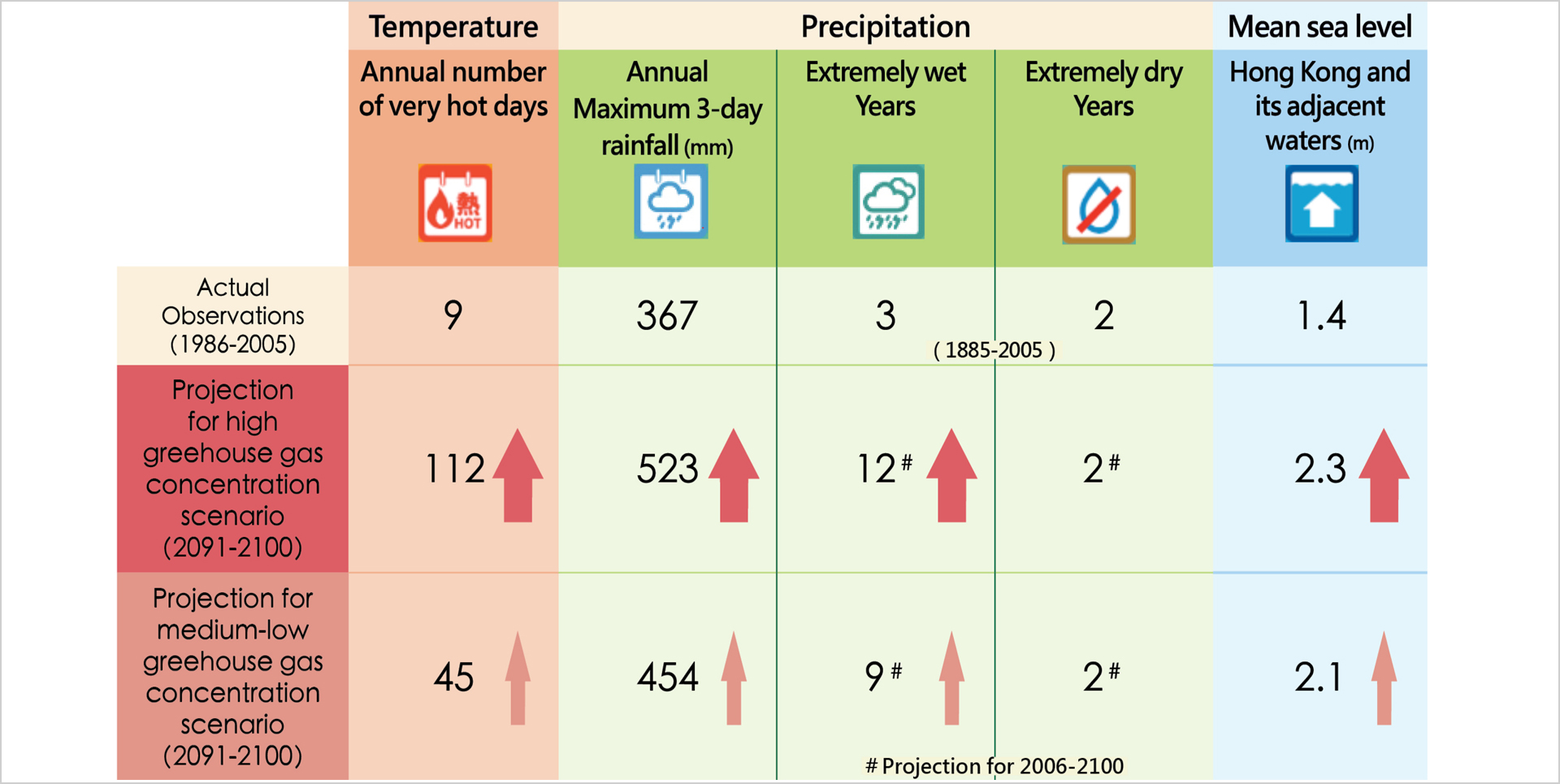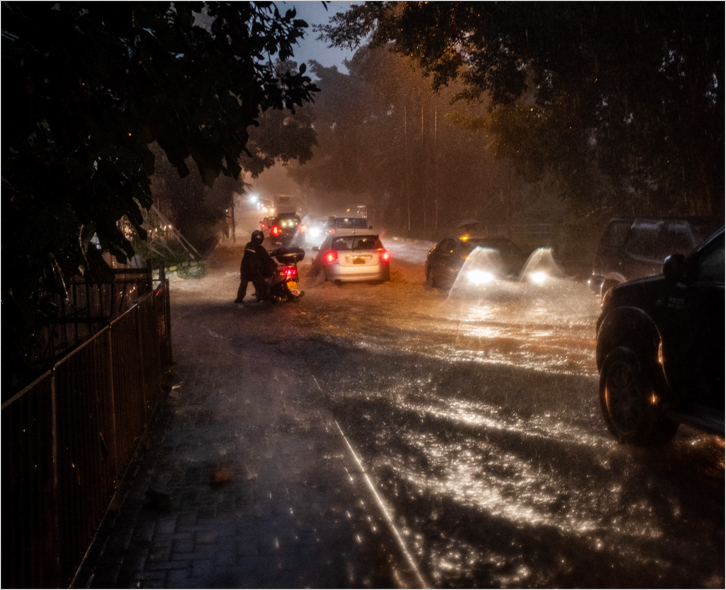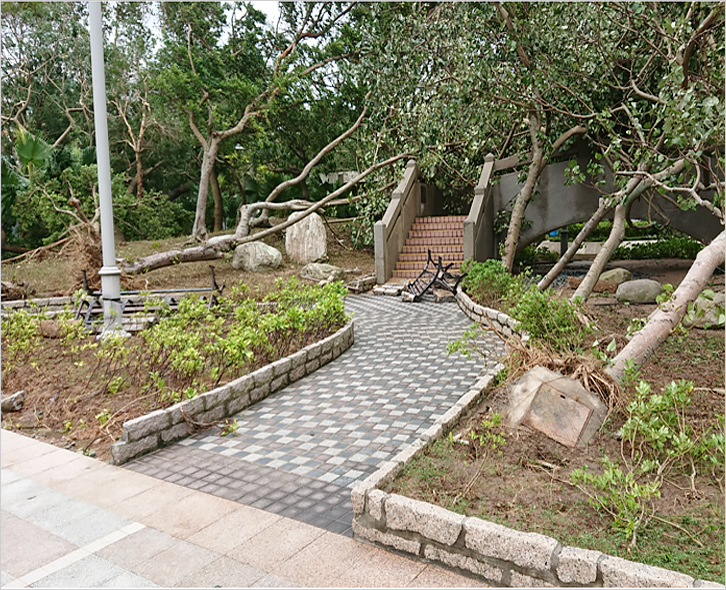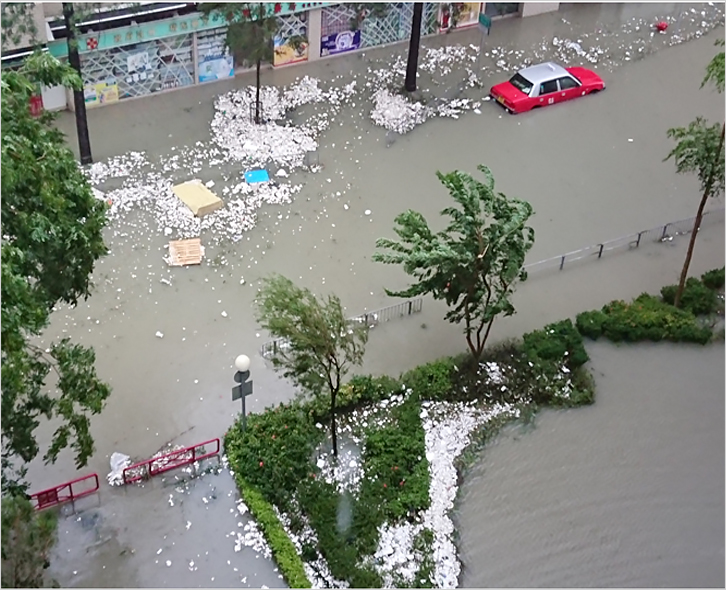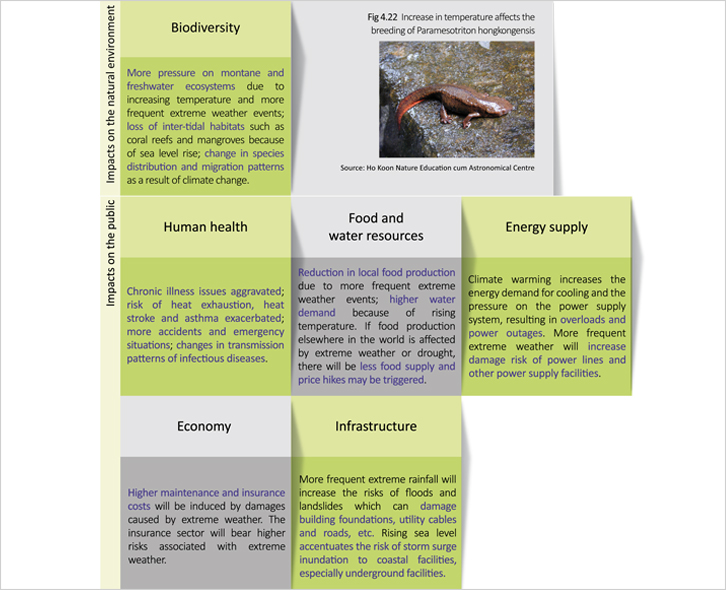The impacts of climate change in Hong Kong
The climatic trends observed in Hong Kong are basically consistent with the global trends. As for the future climate in Hong Kong, the Hong Kong Observatory utilized computer climate model data from the Fifth Assessement Report of IPCC to conduct the projection under different greenhouse gas concentration scenarios. The scenarios considered include low concentration, medium-low concentration, medium-high concentration and high concentration.
★ More Information
Climate Projections for Hong Kong
https://www.hko.gov.hk/climate_change/future_climate_e.htm
Even under the medium-low concentration scenario, the annual number of hot nights and very hot days in Hong Kong will increase significantly. Under the high concentration scenario, the annual number of very hot days at the end of the century will exceed one hundred. For the rest of the century, the number of extremely dry years will be more or less the same as the historical observation. However, the number of extremely wet years will significantly increase. Regardless of the greenhouse gas concentration scenario, sea level in Hong Kong will continue to rise.
Fig 4.18 Future climate of Hong Kong (Source: HKO)
As the climate warms, the average intensity of tropical cyclones and the associated rainfall will increase. More intense tropical cyclones will be more damaging. Exacerbated by sea level rise, the threat of storm surge will heighten.
★ More Information
Special Series for Hato – Storm Surge blamed for all the calamity
★ More Information
Record breaking Mangkhut
https://www.hko.gov.hk/tc/天氣隨筆/101825/破紀錄的「山竹」
★ More Information
A Wake up Call from Mangkhut
https://www.hko.gov.hk/blog/en/archives/00000216.htm
★ More Information
Global warming: Clear and Present Danger (2)
www.hkedcity.net/etv/en/resource/910076169
Climate change also affects biodiversity, public health, energy supply and infrastructure in Hong Kong.
Source of figures and data in Chapter 7.4
[i] http://newscenter.lbl.gov/2013/05/05/boreal/
[ii] www.washington.edu/news/2016/08/26/interactive-map-shows-where-animals-will-move-under-climate-change/
[iii] www.iucn.org/content/new-assessment-highlights-climate-change-most-serious-threat-polar-bear-survival-iucn-red#
[iv] https://climate.nasa.gov/news/2462/climate-change-may-shrink-adelie-penguin-range-by-end-of-century/
[v] https://commons.wikimedia.org/wiki/File:Antarctic,_adelie_penguin_(js)_57.jpg
[vi] https://commons.wikimedia.org/wiki/File:Bramble-cay-melomys.jpg
[vii] www.flickr.com/photos/premierofalberta/26359650513/sizes/l
[viii] https://www.ipcc.ch/site/assets/uploads/2018/03/ar5_wgII_spm_en-1.pdf (P.7)
[ix] www.dvidshub.net/image/770343/aerial-photos-new-jersey-coastline-aftermath-hurricane-sandy
[x]https://commons.wikimedia.org/wiki/User:AWeith#/media/File:Fjortende_Julibreen_at_Krossfjord,_Svalbard.jpg
[xi] https://earthdata.nasa.gov/user-resources/sensing-our-planet/riding-the-permafrost-express
[xii] www.iiasa.ac.at/web/home/about/160104-water-energy.html
[xiii] www.defense.gov/News/Article/Article/612710/
[xiv] www.dinsakerhet.se/siteassets/dinsakerhet.se/broschyren-om-krisen-eller-kriget-kommer/om-krisen-eller-kriget-kommer—engelska.pdf
[xv] www.nasa.gov/feature/goddard/2016/nasa-finds-drought-in-eastern-mediterranean-worst-of-past-900-years


